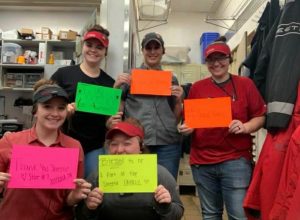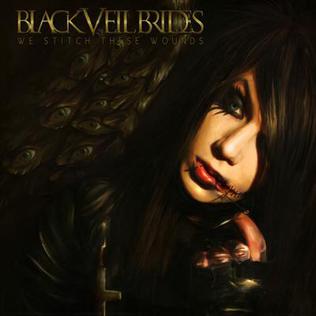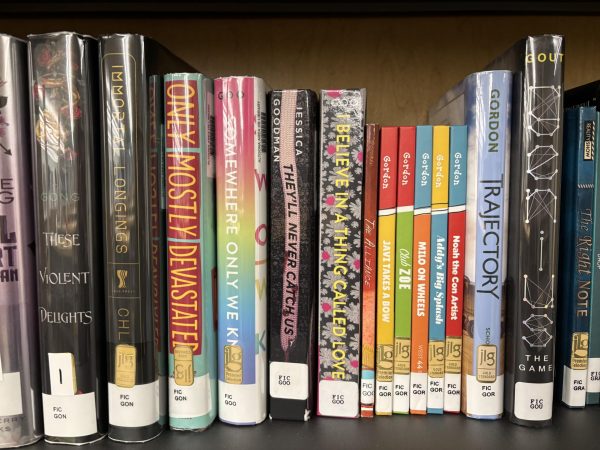Outbreak, Contagion fail to capture American realities in different ways
“The single biggest threat to man’s continued dominance on the planet is the virus,” Nobel Laureate Joshua Lederberg said.
Recently, movies such as “Outbreak” and “Contagion” have become popular again due to their relevance to today’s pandemic. The film “Outbreak” was released in 1995 and “Contagion” came out years later in 2011. Graphic design made with Adobe Spark.
Americans are looking to both fact and fiction in dealing with the coronavirus, COVID-19. In the search for facts, national news channels, with their 24/7 broadcast of COVID-19 coverage, resemble an unending film in which nothing ‘non-virus’ lies outside of its frame. In the search for not-so-escapist fiction, there are numerous ‘virus’ films (without zombies) streaming in popularity, and two of the best known are “Outbreak” and “Contagion.”
THE FILMS
“Outbreak” (1995) follows Colonel Sam Daniels (Dustin Hoffman) as he both develops a cure for the ‘Motaba’ virus and battles his own military which refuses to help the sick and only wants to cover up its past mistakes in containing the virus. There are helicopter battles, chase scenes and a romantic subplot, which make for a highly entertaining film, but one that is disconnected from the nation’s current experience with COVID-19.
Even though the screen time runs 30 minutes less, “Contagion” (2011) manages to cover its fight against its unnamed MEV-1 virus across 130 days (as opposed to approximately only three in “Outbreak”) and includes subplots examining the societal and personal effects a pandemic has on individuals and families. This movie is no helicopter-chasing, working-against-the-clock action thriller, and although it can be confusing with its multiple subplots and a large cast of characters, its depiction of a national pandemic is an interesting watch given the arrival of the Coronavirus in the United States.
“OUTBREAK” MOTABA VIRUS vs. COVID-19
The Motaba virus is in several ways different from the coronavirus. At first, the virus is passed through saliva and blood. However, as the movie continues, the virus mutates and becomes airborne with no contact needed. The Motaba virus can be seen–when one is sick, it is apparent and physically disturbing. In two to three days of contracting the Motaba virus, pink lesions begin to appear all over the body along with small pustules that will erupt with blood and pus. Other symptoms include vomiting, diarrhea, bleeding in the nose, ears and gums. Right before death, the eyes hemorrhage and the internal organs shut down and essentially liquify, similar to the Bubonic Plague. The Motaba virus is made to look like how it feels. The audience doesn’t need to be told a person is infected, as the movie makes it known visually. In contrast, people who have contracted the Coronavirus may not know for two weeks, and carriers may never know. In a way, this makes the coronavirus all the scarier.
“CONTAGION” MEV-1 vs. COVID-19
The MEV-1 virus transfers through physical human contact and contact with surfaces. Actions as simple as the exchanging of a credit card from customer to worker, pressing an elevator button, holding onto a bus pole and touching a door were shown through close-ups, emphasizing how easily the virus can transmit. The beginning of the movie is a sequence of people, throughout the world, showing the same sick appearance. A woman in Minneapolis, a man in Tokyo, a boy in Hong Kong and another woman in London are all shown touching their faces, other people and things–as many people unknowingly do–and the pale, sweaty faces they all have in common. The virus symptoms are close to COVID-19, as the film’s virus affects the cells of the respiratory system and the nervous system. Trouble swallowing, severe headache and fever with a high temperature are all signs. Before an infected person dies, he or she will seize and spit out a white foamy substance. Death usually comes soon after. The power of the film, seen in today’s context, is its depiction of a virus similar to COVID-19.
GOVERNMENT RESPONSE
Throughout “Outbreak,” the government plays the role of the ‘bad guy,’ meaning they don’t do much to help the situation and only make it worse by initially underestimating the power of the virus. In the small county of Cedar Creek, California, which is the center of the outbreak, the military forces people to stay in their homes, quarantining residents with specific curfews and strict rules not to leave the area. The virus is well-contained, only affecting Boston, Massachusetts and Cedar Creek County. In “Contagion,” a mandatory quarantine was originally put into place, but containment fails and the virus is spread throughout America. All state borders and bridges are closed and are guarded by the military, which refuses to allow people through, resident or not. The government planned to keep the virus a secret until it was contained; however, the media reported on the virus before the government had any way to respond, inciting fear and panic.
Similar to “Outbreak,” the United States saw a response to quarantine communities; although, less dramatically, without military intervention. With COVID-19, public intervention has come at the state-level, with little federal response and intervention. Unlike the secrecy of “Outbreak” and “Contagion,” the United States has openly reported on the number of coronavirus cases and deaths. But similar to the films, the federal government tends to downplay the virus, focusing more on post-virus plans before COVID-19 has been fully contained.
HOLLYWOOD CURE
In “Outbreak,” the Motaba virus is a death sentence with its mortality rate of 100 percent. Daniels creates the cure for Motaba within three days, which is then successfully reproduced and distributed to infected people throughout the county in California. The cure comes from the blood of the original host of the virus (a monkey). In “Contagion” the mortality rate is 25 to 30 percent, and unlike highlighting Daniels’ ability to cure the virus within a few days, “Contagion” discovers the cure within 100 days; however, the cure is never identified and where the cure comes from or how it was discovered is never revealed to the audience.
In contrast to a Hollywood production, the current death rate for COVID-19 is less than five percent, and medical experts estimate a vaccine for the coronavirus to be 12-18 months away. Although it doesn’t make for exciting film drama, in reality, treatment interventions are the current focus, as the real world cannot wait for a cure.
AMERICAN REACTION: WHAT “CONTAGION” REALLY GOT WRONG
“Outbreak” is essentially an action film spanning three days, from outbreak to cure, about a virus unlike COVID-19, whereas “Contagion” is primarily a drama about realistic transference and societal response to a virus very similar to COVID-19. However, the drama of “Contagion” relies on the idea that a pandemic will destroy the social order, that the laws and rules that people once obeyed will go to ruin and chaos will reign. There are many shots that consist of empty streets covered in garbage, people breaking into cars and houses and dangerous riots. There is a particular scene where Matt Damon’s character and his daughter go to the grocery store for food and supplies–the entire store is bare, windows are shattered and there are people jumping over the counters with piles of food in their arms. No workers, no police–nobody to stop them. All nurses throughout America are on strike due to the dangerous working conditions and many doctors are being harshly questioned and even threatened for a cure.
“Contagion” sees a pandemic as something that tears a society apart, that erases all rules and structure; however, what’s occurring with the world now seems to be the opposite of what the film predicted. Nurses are not on strike, grocery stores are still open, police officers continue their work (as do firefighters, bus drivers, mail carriers), and there are no riots, no mass looting, and no trash in the streets or graffiti on the sides of houses.
America and other countries have socially unified during this time. In Italy, neighbors sing and play music on their balconies, while in Australia, Japan and America, people sit out stuffed animals near their windows for children to spot during quarantine. Musicians, entertainers and late-night talk show hosts are still providing for their audiences and fans from their own homes. Cities go to their windows to applaud their healthcare workers, Google devotes its daily doodle to workers on the front lines and there are commercials, billboards and homemade signs throughout America dedicated to thanking essential workers.
Despite these great moments, it’s difficult to find light in a time like today with the increasing number of coronavirus cases and deaths, but movies like these unintentionally put life into perspective. The purpose of both “Outbreak” and “Contagion” was to scare audiences at the box office, but watching these movies during an actual pandemic gives a sense of relief in how off the mark they are in society’s collapse. For Americans not directly impacted by the coronavirus, the main concerns are getting back to work and hoarding toilet paper.
The world is far from perfect and people will disobey–it’s human nature. As more Americans contract COVID-19, exhaust emergency funds and resources, anything could change tomorrow. Yet as of now, society isn’t crumbling, in fact, it seems to be coming together.

I’m Sydney Wilfong, a senior at AAHS. I’m part of the band as a proud tenor saxophone player. On the days I have time, I enjoy writing, reading and...
















